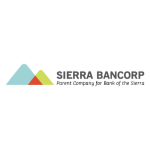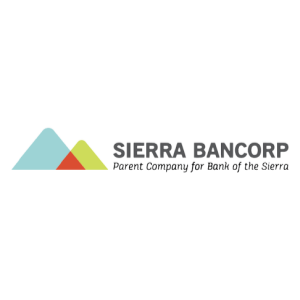Welcome to our dedicated page for Sierra Bancorp SEC filings (Ticker: BSRR), a comprehensive resource for investors and traders seeking official regulatory documents including 10-K annual reports, 10-Q quarterly earnings, 8-K material events, and insider trading forms.
Sifting through the capital ratios, loan-loss provisions, and branch expansion details buried in Sierra Bancorp鈥檚 disclosures can feel like another full-time job. That鈥檚 why investors begin their research here, on a page built to answer real questions鈥攍ike 鈥淲here do I find Sierra Bancorp insider trading Form 4 transactions in real time?鈥�鈥攚ithout wading through EDGAR鈥檚 maze.
Our AI reviews every submission the moment it hits the SEC, turning a 200-page annual report into a concise briefing. From the Sierra Bancorp annual report 10-K simplified to each Sierra Bancorp quarterly earnings report 10-Q filing, you鈥檒l see key ratios, net interest margin shifts, and credit-quality metrics highlighted instantly. Need to track management sentiment? Receive alerts for Sierra Bancorp Form 4 insider transactions real-time, complete with easy-to-read charts of executive stock moves.
Wondering how a new branch opening might affect deposits? The AI tags every Sierra Bancorp 8-K material events explained, so you know which disclosures signal growth or risk. Proxy season questions such as 鈥淪ierra Bancorp proxy statement executive compensation鈥� are resolved with side-by-side visuals comparing pay to peer banks.
- Instant AI-powered summaries that decode complex banking jargon
- Complete coverage of 10-K, 10-Q, 8-K, Forms 3/4/5, and S-3 offerings
- Drill-downs for Sierra Bancorp earnings report filing analysis across loan categories
- Mobile and desktop alerts for Sierra Bancorp executive stock transactions Form 4
Whether you鈥檙e understanding Sierra Bancorp SEC documents with AI for credit-risk models or scouting dividend sustainability, this page delivers the data, context, and speed professionals expect鈥攏o manual scrolling required.
Franklin Financial Services (FRAF) 鈥� Insider transaction summary
EVP/CFO Mark R. Hollar filed a Form 4 for transactions on 07/25/2025:
- Option exercise (Code M): 3,000 common shares acquired at a strike price of $30.00.
- Share withholding (Code F): 2,102 shares surrendered at the market price of $42.83 to fund the cashless exercise.
After the two entries, Hollar鈥檚 direct beneficial ownership stands at 15,572 shares (plus 96 DRIP shares and previously reported unvested RSUs). The net result is an increase of 鈮�898 shares, signalling a modest rise in insider exposure. No derivative securities remain from the 2017 option grant; 2,927 options from a 2018 grant are still outstanding.
Insider option exercises when the market price materially exceeds the strike (鈻� 43%) can indicate executive confidence and are generally viewed positively, although the partial share disposition tempers the signal. The transaction does not impact earnings or guidance but may be of interest to investors tracking insider sentiment.
Sierra Bancorp (ticker BSRR) filed an 8-K to announce the appointment of William 鈥淏ill鈥� Wade II as Executive Vice President and Chief Operations Officer of both Sierra Bancorp and its subsidiary, Bank of the Sierra, effective July 7 2025. Mr. Wade, age 60, joins from Independent Financial where he served as CIO and EVP of Information Technology after holding senior technology roles at Simmons Bank and other industries over a 30-year career.
The Board approved an employment agreement (executed July 1 2025, term through 31 Dec 2028, auto-renewing annually) that provides:
- Minimum base salary of $380,000
- Annual discretionary bonus up to 50 % of base salary
- No-cause severance equal to one year of base salary
- Change-of-control severance equal to 2脳 base salary plus maximum bonus opportunity
- Restricted-stock grant of $400,000, vesting 20 % annually over five years
The filing states there are no family relationships, related-party transactions, or special arrangements influencing Mr. Wade鈥檚 selection.
Expensify, Inc. (EXFY) 鈥� Form 4 filing dated 07/02/2025
Chief Executive Officer and Chairman David Michael Barrett reported the sale of 30,000 Class A common shares on 07/01/2025 under a Rule 10b5-1 trading plan adopted 03/31/2025. The weighted-average sale price was $2.56, with individual trades executed between $2.47 and $2.63. Aggregate consideration was roughly $77,000.
Following the transaction, Barrett鈥檚 beneficial ownership remains substantial at 1,528,480 shares held indirectly through Barrett Trust LLC plus 210,676 shares held directly. The disposed shares represent 鈮�2.0 % of his indirect holdings, suggesting the sale is modest relative to his overall stake.
The filing is limited to this single planned disposition; no derivative security activity, option exercises, or additional purchases were reported. Because the sale was effected pursuant to a pre-established 10b5-1 plan, it may mitigate concerns over opportunistic timing, yet it still constitutes an insider reduction in exposure.
Netcapital Inc. (Nasdaq: NCPL) filed an 8-K reporting that on 26 June 2025 it entered into a Horizon Software Agreement with Switzerland-based Horizon Globex GmbH. Horizon granted Netcapital a royalty-free, paid-up, non-exclusive, perpetual and irrevocable license to use Horizon鈥檚 capital-raising and secondary-trading software under the Company鈥檚 own branding in the United States.
As consideration, Netcapital will issue 500,0000 shares of its common stock (the 鈥淗orizon Shares鈥�) to Horizon or its affiliate. The shares will be issued without registration under Sections 4(a)(2) and/or 3(a)(9) of the Securities Act, and no cash will be received by the Company.
The agreement includes standard termination rights: (i) either party may terminate after a 30-day cure period for material breach, and (ii) immediate termination is permitted upon bankruptcy, receivership, dissolution, or cessation of business of the other party. The full contract is attached as Exhibit 10.1.
This transaction gives Netcapital long-term access to a trading technology platform that could expand its service offering, but it also introduces equity dilution and execution risk should the software fail to drive revenue growth.


